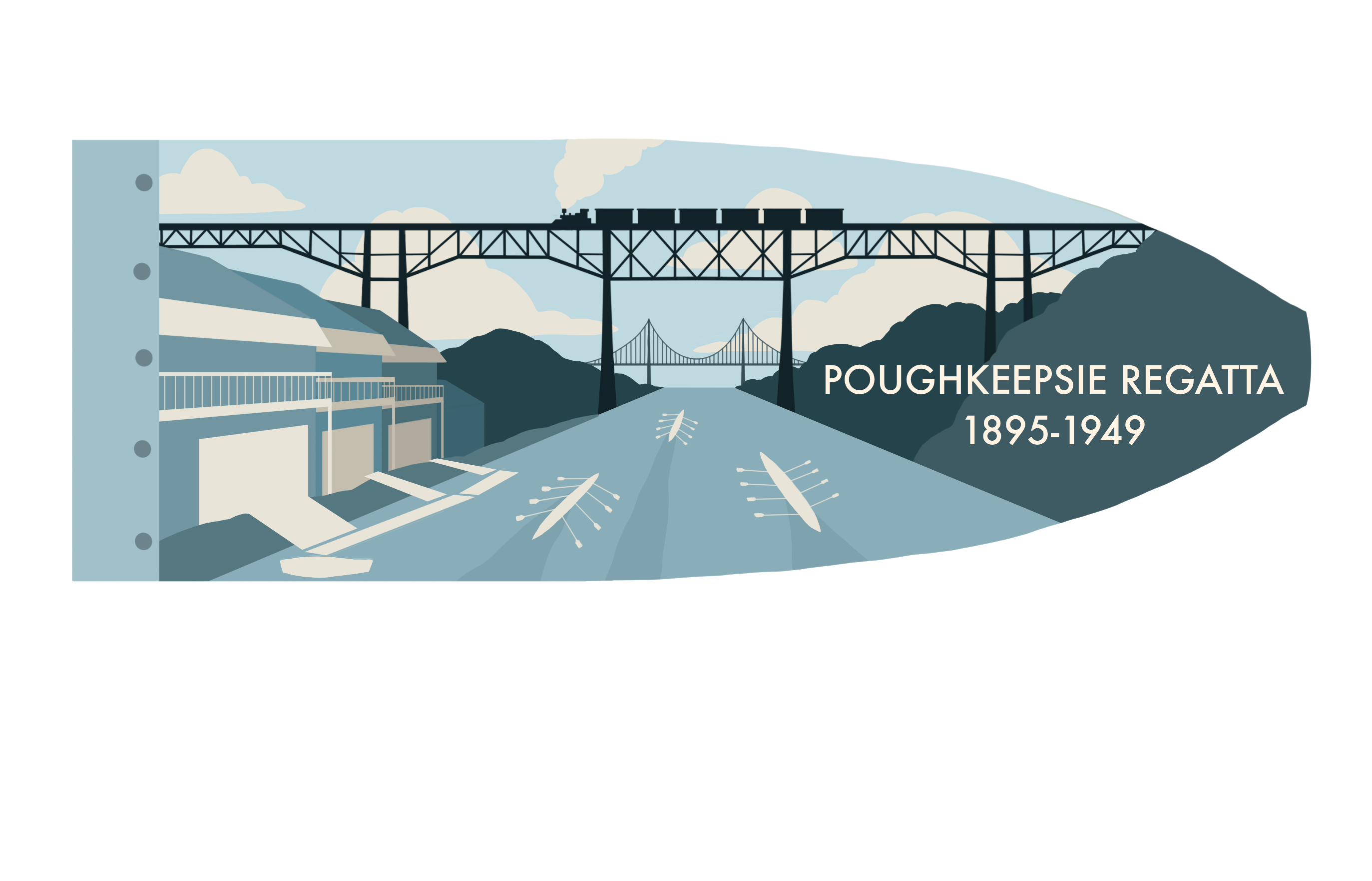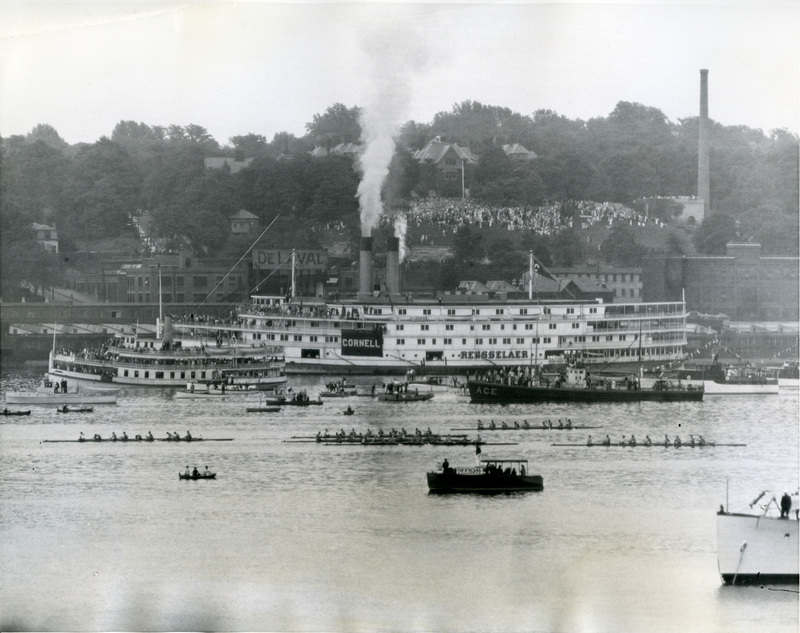The Poughkeepsie Regatta, 1891-1949
Intercollegiate Rowing Association Regatta
The race originally started as the Intercollegiate Rowing Association Regatta, but over time it would become known as the Poughkeepsie Regatta. The Poughkeepsie Regatta was a national collegiate rowing competition held on the Hudson River between 1895 and 1949.*
The Intercollegiate Rowing Association (IRA) was formed in 1891 by Columbia University, Cornell University, and the University of Pennsylvania. They formed the Association in order to hold their own four mile race between their Varsity 8 crews as they had not been allowed to participate in the competition between Harvard and Yale Universities held at New London, CT. In 1895, a section of the Hudson River between Poughkeepsie and Highland, NY (in front of what is now Marist University) was ultimately selected due to the relatively straight four mile stretch of river, the sloping banks that allowed spectators to easily view the race, the ability to run an observation train for spectators along the course to view the race, and the neutrality of the course, it was not home to any university rowing teams.
The Regatta grew in size to include additional races and more than just the original founding members. When Harvard University came to Poughkeepsie in 1896, a Freshman 8 race was added. Yale University attended for the only time in 1897 and it would also mark Harvard's last appearance at Poughkeepsie. Early on the University of Wisconsin, Syracuse University, and Georgetown University began sending crews to Poughkeepsie on a regular basis. The United States Naval Academy sent its first crew in 1907 and in the 1920s would become a regular participant. West coast universities, including Stanford University, the University of Washington, and the University of California, Berkeley began sending entries in 1912, each taking a turn to send a crew. Later on MIT, Rutgers University, and Princeton University would send entries to the "rowing capital of the world." Many of these crews went on to compete in the Olympics after winning at Poughkeepsie, the University of California in 1928, 1932, and 1948. At the infamous 1936 Olympics in Berlin, the University of Washington crew known as "the Boys in the Boat" defeated Hitler's pride and joy, the favored crew from Germany.
The communities of Poughkeepsie and Highland were involved in the Regatta since its beginning. They arranged for boathouses and quarters for crews and also welcomed thousands of race spectators to the area. Famous spectators including Franklin and Eleanor Roosevelt, the Astors, the Vanderbilts, J. Pierpont Morgan, Teddy Roosevelt, and others. The Poughkeepsie Regatta Association was formed to coordinate regatta preparations and facilities. They with generous support from the City of Poughkeepsie, who donated land and funds, built boathouses at "Regatta Row." When the Regatta returned to Poughkeepsie after World War II, citizens arranged massive celebrations with Mardi-Gras style parades, parties, and the crowning of a Poughkeepsie Regatta Queen. While these celebrations were appreciated, they did not meet the crews' needs for additional boathouses and more. And in 1949, the Hudson River hosted its last "Poughkeepsie Regatta."
The Regatta moved to Marietta, OH in 1950 and now rotates venues around the country. The IRA, as the race is known today, is very different from the 1895 race. There are more races, different divisions, and women's rowing is included. The Poughkeepsie Regatta had a large impact on the region, but many have never heard of it or can recall what it meant to this area. Our hope is that through this site, we can share the story of this national collegiate event and its place amongst the rich history of the Hudson River Valley.
*The Regatta was held at Saratoga Lake in 1898 and at Cayuga Lake in 1920. The regatta was interrupted by World War I and World War II and no races were held between 1917-1919 and 1942-1946. The regatta was also cancelled in 1933.

